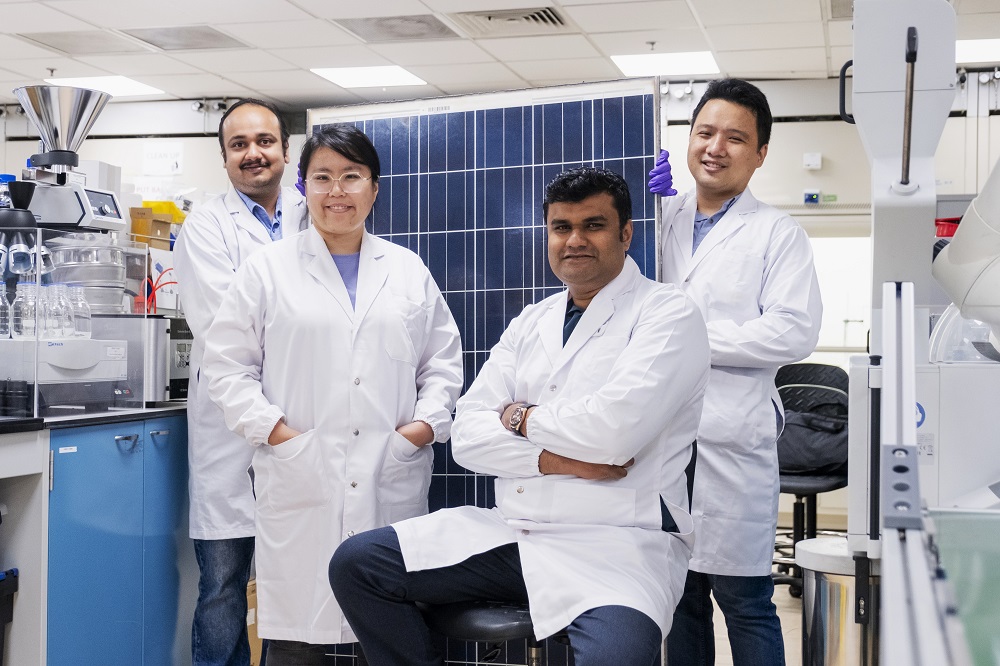Upcycled pure silicon used to create lithium-ion batteries
First published online at Interesting Engineering
After extracting high-purity silicon from expired solar panels, scientists upcycled it into a high-performing lithium-ion battery anode.
Technology has rapidly progressed in the last few decades; however, especially in light of the climate crisis, maintaining its efficiency has proven difficult. Even solar panels have a limited lifespan of just 30 years, implying that 78 million tonnes of solar panels are due to expire by 2050.
Scientists from the Nanyang Technological University, Singapore (NTU Singapore) have come up with an efficient method to recover high-purity silicon from expired solar panels, enabling them to produce lithium-ion batteries.
This breakthrough could help meet the increasing global demand to power electric vehicles, said a statement by the scientists.
Recovering pure silicon from old solar panels
The study aimed to upcycle the silicon in solar panels that are usually discarded after 25 to 30 years due to old age or becoming non-functional. However, engineers find it challenging to separate the pure silicon from other parts of the panel, such as aluminum, copper, silver, lead, and plastic.
The silicon produced from those parts is of insufficient quality; thus, a solution was devised to recycle old solar panels safely.
The researchers developed an extraction method using phosphoric acid – a substance commonly used in the food and beverage industry. They recorded a higher recovery rate and purity than the current recovery methods.
Currently, scientists utilize high-purity silicon from old panels, but the process is energy-intensive, expensive, and, most of all, unsafe as it requires the use of toxic chemicals. The current formula limits recycling opportunities.
Nripan Mathews, Associate Professor, Provost’s Chair in Materials Science and Engineering, and Cluster Director of the Energy Research Institute, stated:
“Our approach to silicon recovery is both efficient and effective. We do not have to use multiple chemicals, reducing the time spent on post-treatment of the chemical wastes. At the same time, we achieved a high recovery rate of pure silicon comparable to those produced by energy-intensive extraction techniques.”
As the new method maintains the resources in a loop, researchers believe that it has the potential to solve the growing problem of solar panel waste.
Silicon essential for EVs
Silicon is a substantial material that helps manufacture the next-generation lithium-ion batteries. These batteries power electric vehicles (EVs) as the technology allows the vehicles an extended range and fast charging times.
The innovators believe that their upcycled development will be able to support the expected demand for high-purity silicon.
The process of manufacturing the silicon for advanced EVs involves soaking expired solar cells in hot diluted phosphoric acid for 30 minutes.
After which, the metals – aluminum and silver – are removed from the surface. This is repeated using phosphoric acid until the metals are completely separated, which results in the production of pure silicon.
The statement by the researchers explains that advanced spectroscopic was deployed to evaluate the elemental content of the recovered wafer. The devised sample achieved a recovery rate of 98.9 percent with a purity of 99.2 percent.
As a consequence, the recovered silicon, when upcycled into a lithium-ion battery anode, performed as well as a brand new commercially purchased silicon.
Dr. Sim Ying, Research Fellow, Energy Research Institute, stated: “The comparable performance between our upcycled silicon-based lithium-ion battery and the newly purchased ones proves that the NTU approach is feasible. We envision our faster and cheaper silicon recovery method to be a positive boost for the development of EV batteries. Aside from EVs, there are also potential applications such as thermoelectric devices.”
The team of scientists submitted a technology disclosure to NTUitive – NTU's innovation and business organization. This step sets the stage for possible commercialization of the silicon recovery method. Simultaneously, the researchers are actively looking for industry partners to investigate potential market uses.
The initiative is integrated into the Singapore-CEA Alliance for Research in Circular Economy (SCARCE) program, a collaboration between NTU and the French Alternative Energies and Atomic Energy Commission.














/enri-thumbnails/careeropportunities1f0caf1c-a12d-479c-be7c-3c04e085c617.tmb-mega-menu.jpg?Culture=en&sfvrsn=d7261e3b_1)

/cradle-thumbnails/research-capabilities1516d0ba63aa44f0b4ee77a8c05263b2.tmb-mega-menu.jpg?Culture=en&sfvrsn=1bc94f8_1)






